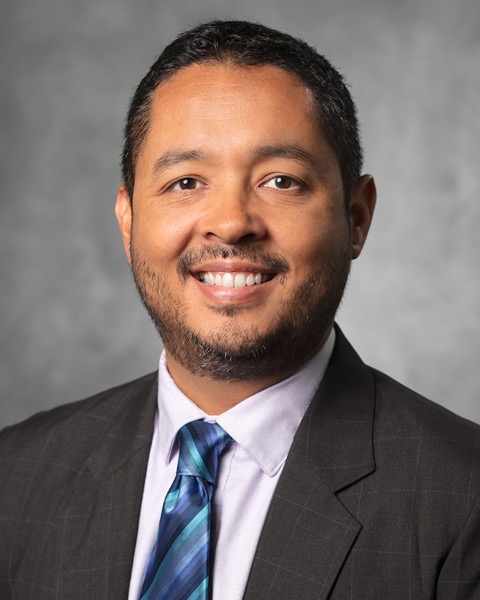Medical Education
Session: Medical Education 4
397 - Putting Health Equity in Context: A Longitudinal Interactive Health Equity Curriculum for the Medical Student Clerkship Year
Saturday, May 4, 2024
3:30 PM - 6:00 PM ET
Poster Number: 397
Publication Number: 397.1645
Publication Number: 397.1645

Richard Silva, MD (he/him/his)
Assistant Clinical Professor
University of California, San Diego School of Medicine
San Diego, California, United States
Presenting Author(s)
Background: According to the County Health Rankings Model, social determinants of health (SDOH) contribute to ~80% of health outcomes, while clinical care accounts for ~20% of modifiable factors contributing to healthy outcomes for a population. Physicians need to acquire the skillset to address SDOH to improve the health of patients and communities. Many medical schools have integrated health equity (HEq) into preclinical curricula, but inclusion in the MS3 clinical clerkships is important for contextual learning and practical skillset acquisition. These skills may allow physicians to reduce health disparities and improve clinical outcomes, while also helping mitigate burnout and improve empathy. To this end, we implemented novel small group, interactive HEq sessions across all core MS3 clinical clerkships.
Objective: To evaluate the efficacy of a longitudinal interactive HEq curriculum for MS3 core clinical clerkships.
Design/Methods: Small group sessions (N~10-15 students) with a focus on HEq were incorporated in all core MS3 clerkships (Table 1) as a part of the Master Clinician Program. Each session was approximately 90-minutes, led by clinical educators (Master Clinicians) who served as subject matter experts. Clerkships repeated the sessions during each clerkship block across the 2022-23 academic year, except Internal Medicine which rotated 6 sessions across the year. Sessions were non-evaluative and interactive, creating a safe learning environment for students to discuss real-life issues encountered and develop a practical approach to promoting HEq in the clinical setting. Students were asked to rate their overall satisfaction with the HEq sessions using a 5-point Likert scale (very unsatisfied, unsatisfied, neutral, satisfied, very satisfied).
Results: A total of 1445 individual evaluations (from 134 MS3s) were submitted for the 19 HEq sessions. Overall, ~86% of the evaluations were rated as satisfied or very satisfied (Table 2). Students commented on the value of the sessions, appreciating the time to work through scenarios, hearing a patient’s and support staff (e.g., social worker) perspective (Table 3).
Conclusion(s): Given the need to equip future physicians with the tools and skills to address adverse SDOH and improve HEq, it is essential to include this type of education and training during the clinical clerkships. The present example of a longitudinal interactive curriculum during the MS3 year shows promise as students were overwhelmingly satisfied or very satisfied with the HEq sessions. Further study is needed to see if skillset acquisition leads to improved patient care and career satisfaction.
.jpg)
.jpg)
.jpg)
